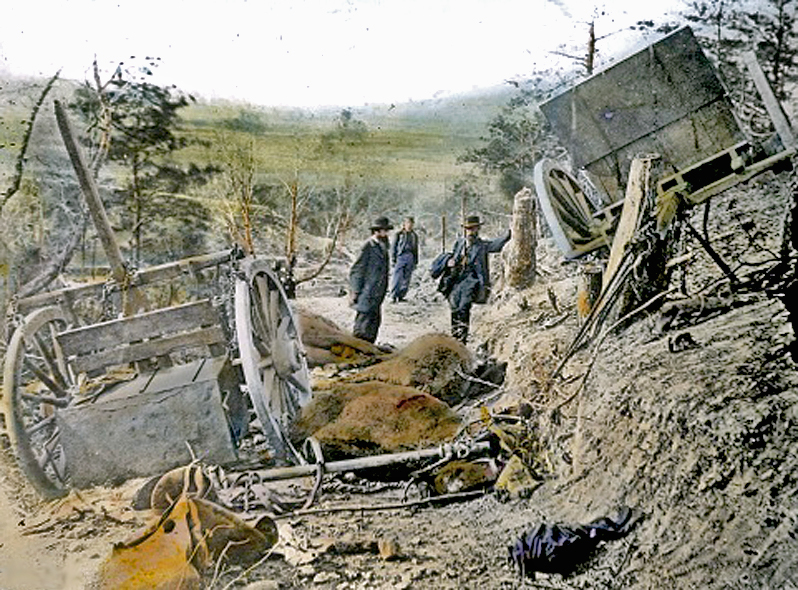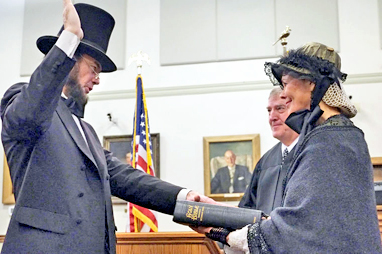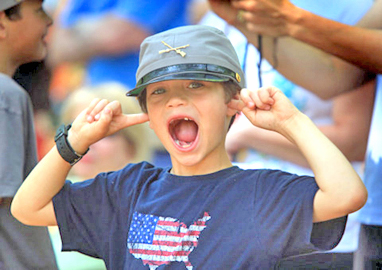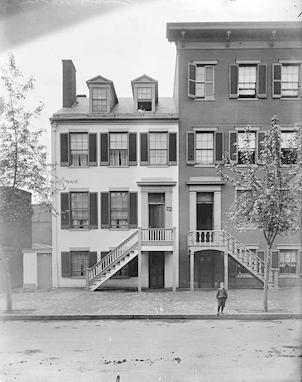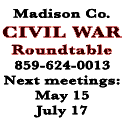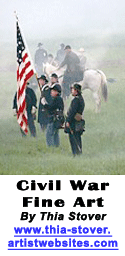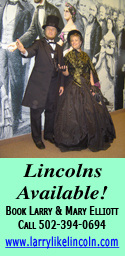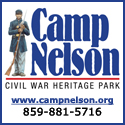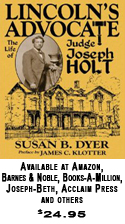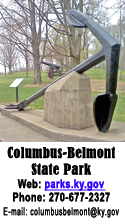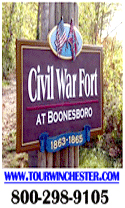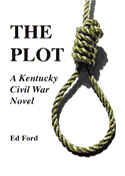|
BORA marks Lincoln inaugural address
with re-enactment at county courthouse
Lincoln portrayer Larry Elliott repeated the final remarks with a flourish.
“With malice toward none, with charity for all, with firmness in the right as God gives us to see the right, let us strive on to finish the work we are in, to bind up the nation’s wounds, to care for him who shall have borne the battle and for his widow and his orphan, to do all which may achieve and cherish a just and lasting peace among ourselves and with all nations.”
March 4 marked the 150th anniversary of President Abraham Lincoln’s second inaugural address. With the assistance of Elliott and the Battle of Richmond Association (BORA), the speech was re-created at the Madison County Courthouse. More
Dr. David W. Yandell . . .
Confederate medical director advanced
medicine education in war, 19th century
By BRYAN BUSH
Bugle Staff Writer
By necessity, war brings advances in medical science. David Wendel Yandell was among those in the Civil War who made that happen as a Confederate medical director and one who continued to impact the profession with his post-war efforts.
Yandell, born Sept. 4, 1826 in Murfreesboro, Tenn., moved with his family to Nashville and then to Lexington when his father accepted a teaching position at Transylvania College. More
Stuart Sanders narrative . . .
Lincoln’s Confederate ‘Little Sister’
examined in essay available on Kindle
Emilie Todd Helm’s visit to the White House created a somewhat major controversy for President Abraham Lincoln.
The half sister of First Lady Mary Todd Lincoln was married to Confederate Gen. Benjamin Hardin Helm and spent the early part of the Civil War following the Southern army. When her husband was killed at the Battle of Chickamauga, Emilie was welcomed at the White House by her sister where they mourned their family’s Civil War losses. More
Folks now dine at famous location
where assassination plot was hatched
This is one you file under “How Things Change.”
The Wok and Roll Chinese restaurant in Washington D.C. is located on that part of H Street that’s now in the heart of the district’s Chinatown. Its address is 604 H Street, but the building formerly had the street number of 541. It previously was a Chinese grocery (Suey Sang Lung Company) and the location of an earlier restaurant (Go-lo’s). In 1865, it was the Surratt Boarding House where the Lincoln assassination conspirators met. More
Detailed letter of Lincoln assassination
purchased for $14,375 at Dallas auction
The most detailed eyewitness account of the assassination of President Abraham Lincoln sold recently at a Dallas auction for $14,375.
The 11-page letter was written by W. Martin Jones, a secretary to several Washington politicians who was sitting in front of the private box that had been prepared for Lincoln and his presidential party. More
Scientists are closing in on answer
as to why the Hunley failed to survive
The Confederate submarine – the H.L. Hunley – was the first sub to sink an enemy warship. But it’s a mystery as to why the hand-cranked vessel sank during the Civil War.
But, a century and a half after it sank and a decade and a half after it was raised, scientists are closing in on the answer. More
Civil War wine failed to age well
below and off coast of Bermuda
Wine ages best under controlled conditions. And the bowels of a sunken ship is not one of them.
A bottle of wine recovered intact four years ago from the 1864 wreck of a Civil War blockade runner was uncorked and sipped by a panel of experts recently during a food festival in Charleston, S.C.
The verdict: A heady sulfur bouquet with distinct notes of saltwater and gasoline. It also was determined that the vintage suffered tremendously from being submerged for more than 150 years off the coast of Bermuda. More
|
|
|
|
Kentucky’s Civil War leaders…
Wood’s clash with Rosecrans led
to controversy at Chickamauga
(EDITOR’S NOTE: This is the 32nd in a series about Kentucky’s officers and battle leaders during the Civil War.)
Munfordville’s Thomas John Wood was the last survivor of his West Point class and the first roommate of U.S. Grant.
But, unfortunately, the union major general also was known for a controversy at the Battle of Chickamauga where he was blamed for contributing to the defeat of Gen. William S. Rosecrans. More
Thanks to Clara Barton. . .
Women served many roles during war,
soon assuming roles as battlefield nurses
What did women do during the Civil War?
According to documented records, some 400 females disguised themselves as men so they could fight in the conflict. Bugle Staff Writer Judy Pierce has researched and written articles on many of these women. Judy also has provided information on women who served as spies – smuggling goods, information and personnel across enemy lines.
Many women participated as nurses. Prior to the war, the U.S. Army used male nurses almost exclusively. Women initially assisted as volunteers, but as fighting continued, they proved they could do the job and both the Union and Confederacy saw the value in sending male nurses out to fight. More
It took three attempts, but finally he
became the youngest enlisted soldier
Here’s a great trivia question:
Who was the youngest enlisted soldier in the Civil War?
The answer: Eight-year-old Avery Brown, drummer boy for Company C, 31st Ohio Volunteer Infantry.
On April 15, 1861, three days after the bombardment of Fort Sumter, an urgent call was made for Union volunteers. Samuel Mott responded in August with a group of men from Delphos, Ohio. They were prepared to enlist, but only if one provision was met.
“I have come here with 101 men,” Mott said, “who are ready to enlist on one condition – that our drummer-boy be mustered in with us and permitted to go to the front. Otherwise we disband right here and return home.” More
Confederate raiders learn it was unwise
to steal memorabilia from an old soldier
William Orlando Butler, soldier and statesman from Jessamine County, was in his seventies when the Civil War occurred.
Although too old to serve as an officer in the War Between the States, Butler had served with distinction as a major in the War of 1812 and as a major general in the Mexican War.
In 1852, he was a strong contender for the Democratic Party’s presidential nomination and was a delegate to the Washington Peace Conference in 1861. Politically, he was a moderate and, although a slaveholder, was opposed to the extension of slavery and favored gradual emancipation. He stood firmly for preservation of the Union and was a Union Democrat during the Civil War. More
Bugle Briefs
Naming of new I-65 bridge must wait
to be considered another legislative day
An effort to name the new I-65 bridge in Louisville “The Abraham Lincoln Memorial Bridge” has failed.
Bill HJR57, referred to the Kentucky Transportation Department, Feb. 5, was not acted upon during the recent legislative session.
Filed by State Rep. Tom Burch, the bill – if passed – would have assigned the Lincoln name to the new downtown bridge between Louisville and Southern Indiana. The Lincoln Heritage Trail Alliance spearheaded the effort to name the new Ohio River crossing which is scheduled to be opened in April 2016.
The bridge initially will carry both northbound and southbound traffic when it opens while a new deck on the Kennedy Bridge is being constructed. When all work is complete on the Downtown Crossing, the new bridge will carry six lanes of northbound I-65 traffic and the Kennedy Bridge will be renovated to carry six lanes of southbound I-65 traffic. More
|
|
|

